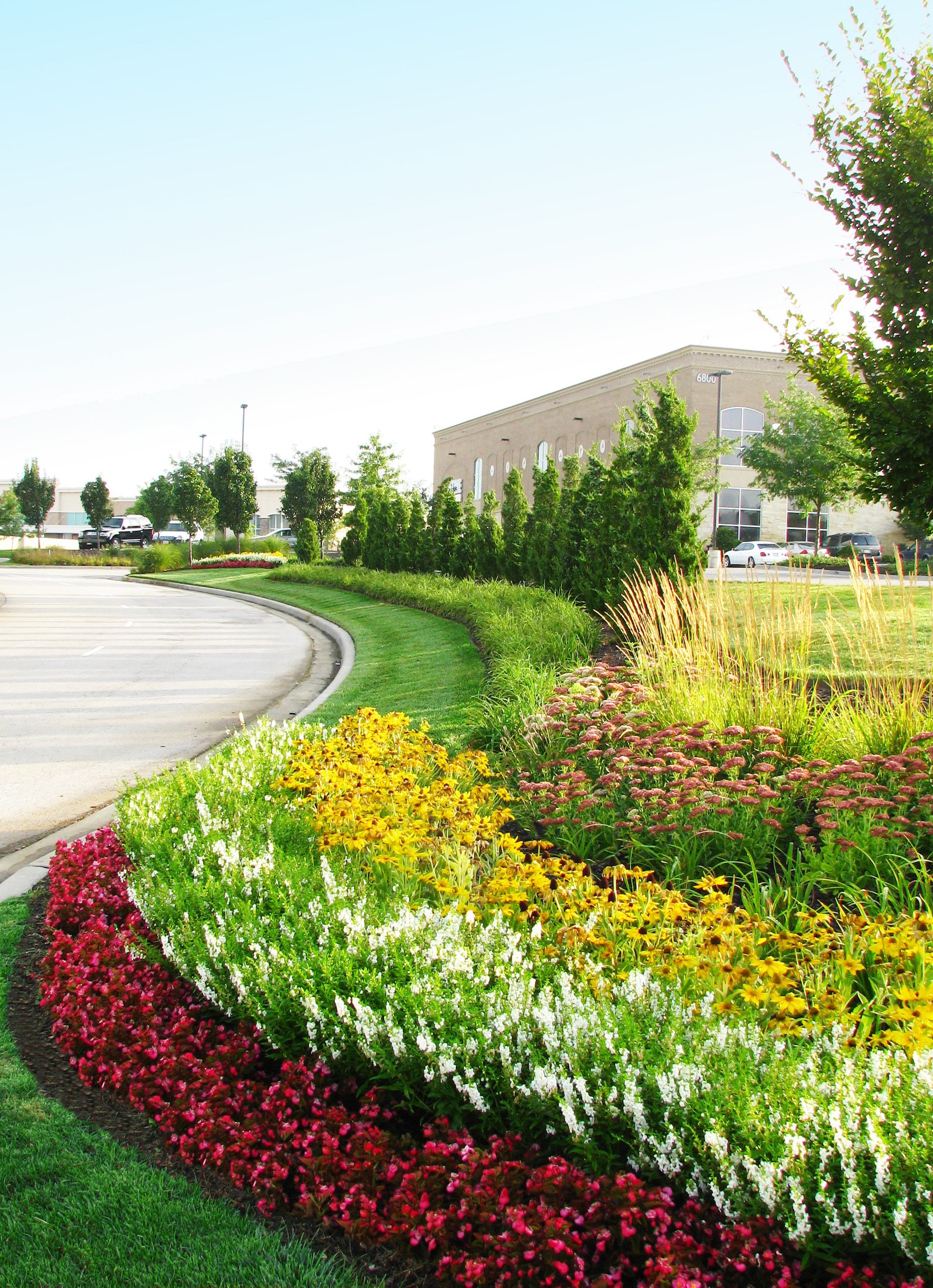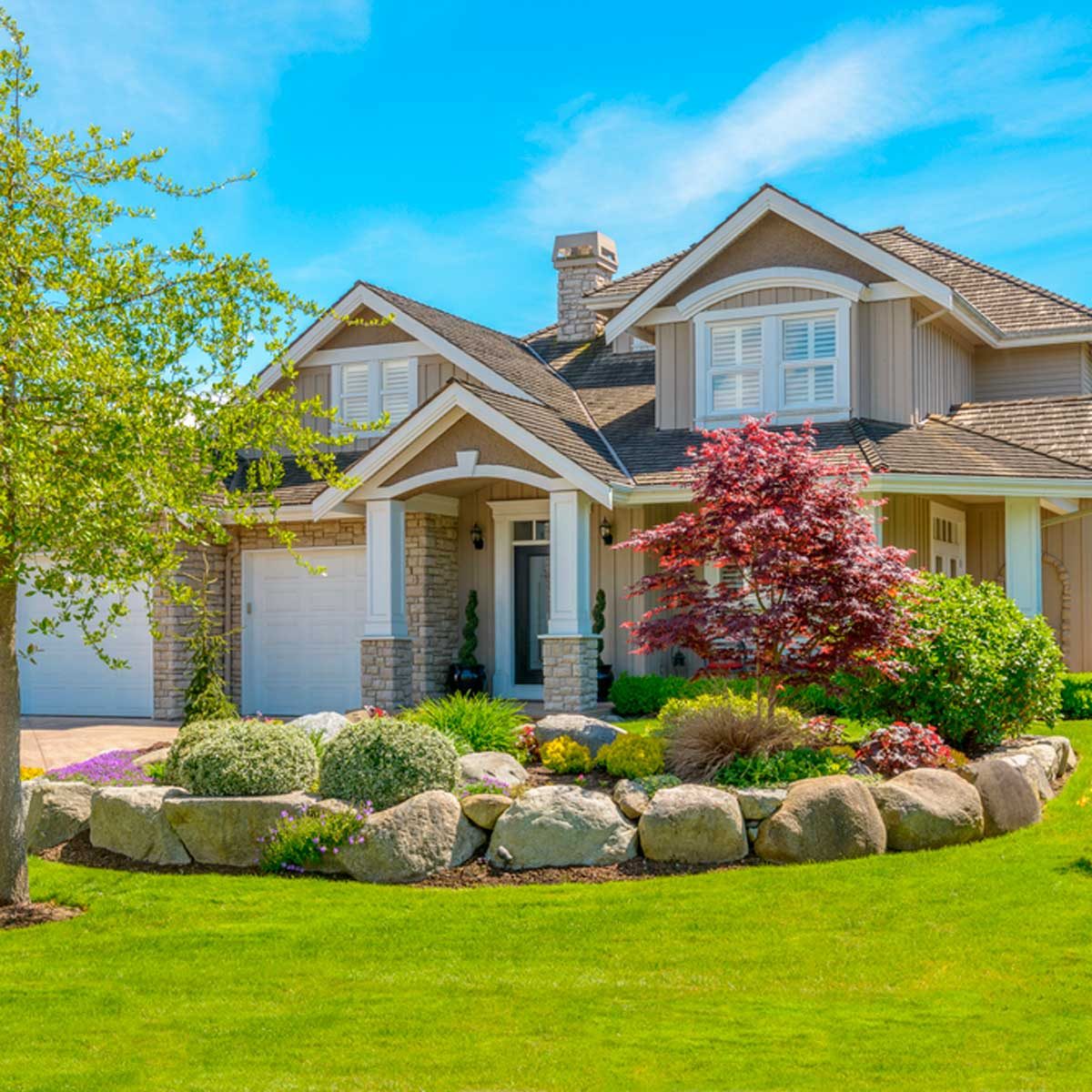Elevate Your Residential or commercial property's Visual With Lasting Landscaping Layouts and Eco-Friendly Practices

Advantages of Sustainable Landscape Design
Applying lasting landscape design methods not only preserves natural sources yet likewise promotes biodiversity and enhances total ecological wellness. One substantial advantage is the reduction of water intake with the usage of drought-resistant plants, rain gardens, and reliable watering systems.
Additionally, sustainable landscaping can enhance dirt health and wellness by lessening the use of chemical plant foods and chemicals, thus creating a much healthier atmosphere for plant development and advantageous soil microorganisms. This, consequently, enhances the general resilience of the landscape to endure environmental stress factors and climate adjustment effects - lawn cleanup Jacksonville. Furthermore, lasting landscape design practices can bring in diverse wild animals, consisting of pollinators like and butterflies, promoting a more vibrant and well balanced ecosystem within the property
Incorporating Indigenous Plants
To build on the advantages of lasting landscape design, a tactical concentrate on integrating native plants can even more enhance ecological durability and promote biodiversity within the landscape. Native plants are species that naturally take place in a certain area and have developed to flourish in the local environment, dirt problems, and ecological community. By consisting of indigenous plants in landscaping designs, homeowner can reduce water usage, lessen the requirement for chemical pesticides and fertilizers, and sustain the neighborhood wild animals population.
Incorporating indigenous plants likewise helps in maintaining the unique personality and identification of a region's vegetation. These plants usually need much less maintenance as soon as established, making them a sustainable and affordable landscaping remedy over time. Additionally, indigenous plants can attract indigenous pollinators like butterflies and , adding to the overall wellness of the community.
When picking indigenous plants for landscaping tasks, it is important to select types that are well-suited to the details ecological conditions of the site. Consulting with neighborhood nurseries or arboretums can provide beneficial assistance on picking the appropriate native plants for a certain area. By incorporating indigenous plants into landscaping styles, homeowner can create lovely, lasting outdoor areas that benefit both the area and the environment.
:max_bytes(150000):strip_icc()/landscaping-on-a-budget-2131962-hero-2c4072b220ee4bd5944c1a4fe816360e.jpg)
Water Preservation Techniques
Effective watering approaches play an important duty in sustainable landscape design practices, guaranteeing ideal water preservation initiatives in outdoor rooms. Implementing methods such as drip irrigation, rainwater harvesting, and wise watering systems can dramatically minimize water wastefulness while keeping a healthy landscape. Drip irrigation delivers water straight to the roots of plants, reducing dissipation and overflow. Rain gathering entails accumulating rain from roofs and storing it for later use in irrigation, reducing the reliance on municipal water sources. Smart irrigation systems make use of climate data and dirt dampness degrees to change watering routines, avoiding overwatering and promoting water effectiveness.
In addition to advanced watering techniques, xeriscaping is another water-saving landscape design strategy that concentrates on using drought-resistant plants, compost, and effective irrigation to develop a low-water landscape style - landscaping companies Jacksonville. By choosing native plants that are well-suited to the neighborhood environment and dirt conditions, homeowner can decrease the need for excessive watering, inevitably conserving water and advertising a lasting outdoor atmosphere
Eco-Friendly Hardscaping Concepts
Enhancing outside rooms with green hardscaping features can add considerably to lasting landscaping methods. Choose for products like reclaimed wood, recycled concrete, or all-natural rock to click now reduce ecological influence when considering hardscaping aspects. These products not just add a distinct visual charm to your exterior space however likewise lower the need for new resources extraction.
Applying absorptive paving options such as gravel or permeable concrete can help decrease water overflow and advertise groundwater recharge. These choices permit rain to permeate right into the ground, protecting against erosion and lessening the problem on stormwater systems.
Incorporating indigenous plants right into hardscaping designs can better boost eco-friendliness by sustaining regional wildlife and reducing the demand for too much watering or chemical therapies. By integrating eco-friendly walls or upright yards, you can introduce much more vegetation right into city settings, improving air top quality and biodiversity.
Integrating energy-efficient illumination, such as solar-powered LEDs, right into hardscaping styles can lower electrical energy usage and lower your residential or commercial property's carbon impact. Focusing on environment-friendly hardscaping ideas not just improves the beauty of your exterior area but additionally demonstrates a dedication to environmental stewardship.
Upkeep Tips for Sustainable Landscapes

Consistently trim plants to promote healthy and balanced growth and avoid overgrowth that can result in pest invasions or conditions. Usage natural plant foods to nurture the dirt and plants without harmful chemicals that can seep right into the environment. For hardscaping elements, such as permeable pavers or stone pathways, routinely clean them to avoid debris buildup and maintain their performance. By staying proactive with maintenance tasks, you can maintain the elegance and sustainability of your landscape for several years ahead.
Conclusion
To conclude, lasting landscape design practices offer various advantages for building owners, from enhancing the aesthetic appeal of the environments to promoting ecological preservation. By incorporating indigenous plants, executing water preservation techniques, and making use of environmentally friendly hardscaping ideas, homeowner can develop beautiful landscapes that my site are also eco liable. With correct upkeep, sustainable landscapes can add and grow to a much healthier environment for both human beings and wildlife.
In addition, sustainable landscape design can improve soil wellness by lessening the use of chemical fertilizers and chemicals, consequently producing read more a much healthier environment for plant development and valuable soil microorganisms.To develop upon the benefits of sustainable landscape design, a tactical emphasis on including native plants can additionally enhance environmental resilience and advertise biodiversity within the landscape. By consisting of indigenous plants in landscaping layouts, property proprietors can lower water usage, decrease the need for chemical pesticides and plant foods, and sustain the local wild animals populace.
These plants commonly need less upkeep as soon as developed, making them a lasting and cost-efficient landscape design service in the long run. By incorporating native plants into landscaping styles, residential or commercial property owners can develop gorgeous, lasting outside areas that profit both the area and the environment.